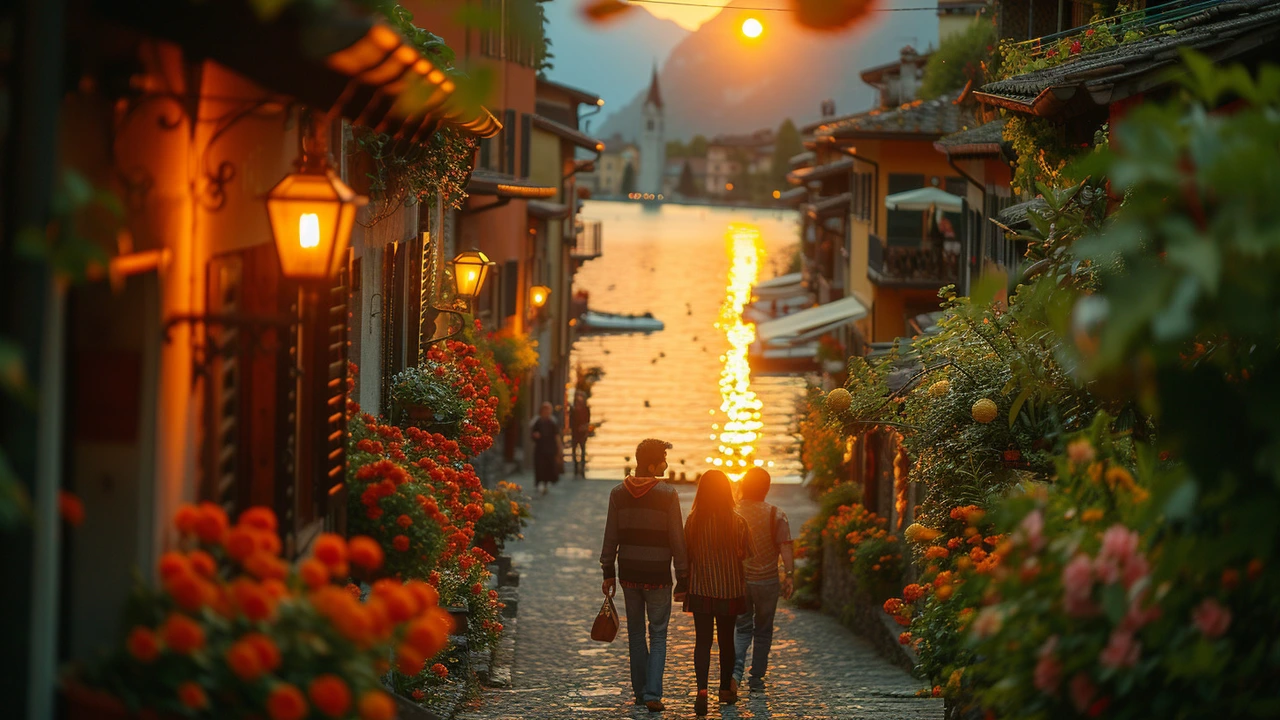The Charm of Italianate Architecture: A Comprehensive Guide
 Oct, 10 2023
Oct, 10 2023
Understanding the Beauty of Italianate Architecture
Italianate Architecture, my dear reader, is that enticing kid in class that exudes charm without uttering a word, simply through its elegant flair. With roots plunging deep into the soils of 16th century Italian Monarchy and branching out through the British Isles and America during the Victorian era, Italianate Architecture encapsulates grandeur that has stood, and continues to stand, against the test of time.
The premise of Italianate Architecture is predominantly defined by its grandiose constructions, ornate detailing, widely bracketed eaves, and tall, rounded windows. It essentially gives buildings an air of aristocratic stature, reminiscent of Roman grandeur, and is no less than a declaration of an opulent lifestyle. While walking my poodle Benji around Ottawa, I'd constantly come across these antique Italianate gems that have managed to age like fine wine.
Picturing through Influential Ages
Linking the past with the present, Italianate Architecture, like a revered elder, holds many stories within its facades and mouldings. The journey of these structural designs begins within the palaces and villas of Italy, courtesy of traction gained by the architectural trend of renaissance. Subsequently, the style swept through Europe, sprinkling its magic upon the British Isles during the industrial revolution. I ironically remember my own sense of shock when I first learnt that the distinctively Italian style was reshaped and established by the British; surely, colonial culture diffusion at its finest!
Defining the Italianate Characteristics
Transforming a building into an Italianate masterpiece is akin to turning an ordinary Drake into an ethereal Rowan. This metamorphosis involves bold rooftop cornices, widespread eaves held aloft by intricate brackets, and inviting hood mouldings above tall, arched windows. Bay windows are another visually appealing feature, offering panoramic views. Let's not forget about the towers and belvederes, the icing on this architectural cake. These elements together create an elaborate yet harmonious symphony of design details that create a feast for the eyes.
Victorian Evolution of Italianate Architecture
Now, just like the family recipe that evolves with each generation, the Italianate style underwent profound changes when it crossed borderlines during the 19th Century. British architects, after being smitten by this style, transformed it into a more accessible variation for the burgeoning middle class. The Victorian era witnessed a revolution in Italianate designs, birthing asymmetrical villas adorning their corners with towers and boasting widened, bay windows. And just like that, Italianate architecture spread like wild, refined fire across the Anglophile world.
Buon Giorno, America!
America, the grand canvas of diverse architectural styles, welcomed Italianate design into its bosom around the mid-19th century. American architects, taking a cue from the British, poured a dollop of their own creativity into the mix. The result was a stunning adaptation that echoed the elegance of Italy while retaining the robust integrity of American homes. Brick and wood became de rigueur in designing American Italianate structures, while stick-style elements sneaked their way in, adding a unique touch to this architectural offspring.
Indulging in Italianate Interiors
Italianate architecture is not merely about the aesthetic appeasement of the facades; it's an immersive experience. When you cross the threshold of an Italianate home, you're greeted by high ceilings playing host to elaborate chandeliers, and towering, French doors that summon in sunlight whenever they please. Roaming further within, you will be delighted to discover marble fireplaces, elegant staircases, and a natural incorporation of indoor plants. Clients commonly request Italianate-style interiors to add a dash of historical chic to their homes. And honestly, who could blame them?
Renaissance of Italianate Style in Present Day
The grandeur of Italianate architecture is not confined within the dusty pages of history books. Today, modern architects are smitten by its classic appeal just as their predecessors were centuries ago. This style is making a glorious comeback, leaving its distinct footprint in urban spaces. Modern villasespecially grace the view with their expansive bay windows and balconies, echoing the classical harmony of form and function present in their Italianate heritage. So, whether you're an aspiring homeowner, an established real estate developer or simply an architecture enthusiast like myself, it seems we can't escape the timeless charm of Italianate design.